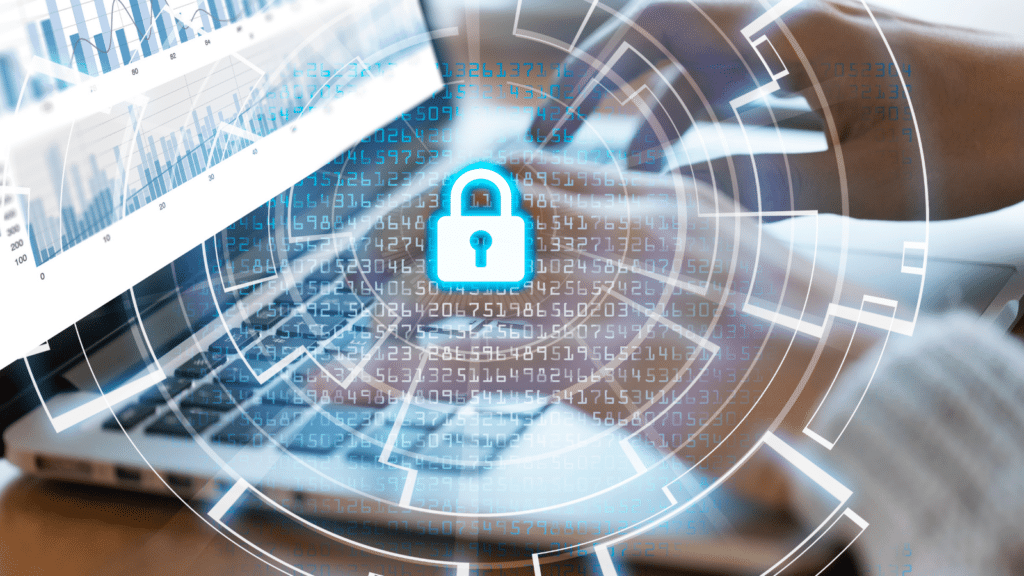Top Cybersecurity Trends for 2024: Navigating the Future of Digital Defense

Cybersecurity trends in 2024: an overview of challenges and solutions
Cybersecurity remains a critical issue for businesses, governments, and individuals as we enter 2024. As technology rapidly evolves, cyber threats are following suit, becoming more complex as digital advances evolve. The rise of artificial intelligence (AI), the Internet of Things (IoT), and new work practices, such as remote work, are profoundly changing the cybersecurity landscape. This article provides an in-depth analysis of cybersecurity trends for 2024, highlighting the challenges ahead and strategies for adapting to them.
Artificial Intelligence and Cybersecurity
AI as an ally in cybersecurity
Artificial intelligence (AI) is at the forefront of cybersecurity trends for 2024. Indeed, AI is increasingly becoming an essential tool for detecting, analyzing, and responding to cyber threats in real time. AI solutions can enhance the detection of abnormal behavior, recognize cyberattack patterns, and anticipate threats before they materialize. Machine learning and natural language processing (NLP) are building systems that can analyze massive amounts of data for potential threats.
AI as a tool for cybercriminals
While AI is a major asset for enhancing security, it is also being exploited by cybercriminals. In 2024, automated cyberattacks driven by AI algorithms will become more common. These attacks, known as “intelligent malware,” are able to adapt to their environment and evolve to bypass traditional defenses. For example, “deepfake” attacks, which rely on image and sound synthesis technologies, are being used to impersonate identities and conduct more sophisticated fraud campaigns.
The rise of ransomware and targeted attacks
The Evolution of Ransomware
Ransomware remains one of the most devastating threats to businesses and public institutions. In 2024, these attacks are becoming more targeted and sophisticated. Unlike the mass attacks of the past, cybercriminals are now taking a personalized approach, targeting specific companies or even individuals with higher ransom demands. Critical sectors such as healthcare, energy, and infrastructure are particularly vulnerable. In 2024, ransomware attacks in France continue to represent a major threat to businesses. According to several reports, approximately 74% of French companies were affected by ransomware this year, an increase from 64% in 2023. These attacks are particularly concentrated on small and medium-sized enterprises (SMEs), which represent 60% of victims (SOPHOS SOS Ransomware).
The impact of ransomware on critical infrastructure
Cyberattacks on critical infrastructure continue to increase, with potentially catastrophic consequences. Attacks on power grids, transportation systems, and hospitals can cause large-scale service disruptions, putting public safety at risk. In response, governments around the world are strengthening cybersecurity regulations to protect these vital infrastructures.
Cloud cybersecurity: an ever-increasing challenge
Massive adoption of the cloud and its security issues
Cloud adoption continues to grow at a rapid pace, offering benefits in terms of flexibility, scalability, and cost reduction. However, this shift to the cloud also exposes organizations to new risks. The security of cloud environments, including multi-cloud infrastructures and hybrid cloud solutions, is becoming a priority topic for cybersecurity teams. In 2024, cloud identity and access management (IAM) and the protection of sensitive data are among the top concerns.
Container and Infrastructure Security DevSecOps
With the rise of container-based architectures and the widespread adoption of DevSecOps practices, securing CI/CD (Continuous Integration/Continuous Deployment) pipelines becomes crucial. Enterprises must ensure that container images used are not compromised and that vulnerabilities are identified early in development. By 2024, integrating security early in the software development lifecycle (Shift Left Security) will become common practice.
Cybersecurity of connected objects (IoT)
The proliferation of connected objects and the associated risks
The Internet of Things (IoT) continues its explosive growth with billions of connected devices in use worldwide. This proliferation of connected objects, from smart home devices to industrial equipment, significantly increases the potential attack surface. In 2024, IoT security remains a major challenge due to the diversity of devices, which are often poorly protected and vulnerable to attack.
Cybersecurity regulation of IoT devices
In response to these challenges, regulators are seeking to strengthen the security of IoT devices by imposing stricter standards. Initiatives such as the IoT Device Cybersecurity Act, adopted in several countries, aim to ensure that these devices incorporate security features by design, such as strong authentication, security patch management, and automatic software updates.
Data management and privacy protection
The evolution of data protection regulations
Data protection and privacy continue to be major concerns in 2024, as cyberattacks become more frequent and sophisticated. New regulations, such as the General Data Protection Regulation (GDPR) in Europe, are being emulated in other regions of the world. These laws impose strict constraints on how companies collect, store and process user data.
The Rise of Data Privacy
Consumers and businesses are becoming increasingly aware of data privacy. Implementing data privacy solutions, such as end-to-end encryption, access management, and pseudonymization of sensitive data, has become essential to comply with laws and regain user trust. In 2024, data privacy is becoming a selling point for many tech companies.
Cybersecurity in the hybrid workplace
The challenges of securing telework
The COVID-19 pandemic has transformed the world of work, making remote work and hybrid work models ubiquitous. In 2024, businesses must continue to secure these flexible work environments. Securing remote connections, managing personal devices (BYOD), and educating employees about cyber threats are becoming priorities.
The rise of social engineering attacks
With the rise of remote work, cybercriminals are exploiting human weaknesses through social engineering attacks, such as phishing, spear-phishing, and vishing (voice phishing). These attacks aim to manipulate users into disclosing sensitive information or performing dangerous actions. In 2024, companies must do more to train their employees to recognize these scam attempts. Among the most common attacks, CEO or fake wire transfer scams have increased by 63%
Government initiatives and international cooperation
Strengthening national cybersecurity policies
Governments around the world are taking steps to improve their resilience to cyberattacks. In 2024, several countries are adopting new legislation imposing strict security standards on businesses, particularly in critical sectors. Cybersecurity is now considered a national priority, with massive investments in research and development of advanced cybersecurity solutions.
International cooperation against cyber threats
Cyberattacks know no borders, and in response, international cooperation on cybersecurity is growing. Initiatives such as alliances between countries to share threat information, coordinate responses to cyber incidents, and promote international cybersecurity standards are gaining momentum in 2024. This cooperation is essential to effectively combat cybercriminals operating on a global scale.
Cyber resilience: beyond cybersecurity
In 2024, cybersecurity is no longer just about preventing attacks. Companies must also prepare to respond effectively in the event of an incident. Cyber resilience, which encompasses the ability to maintain operations despite a cyberattack and recover quickly after it, is becoming a central pillar of security strategies.
Continue reading

Cybersecurity Promotion Program

What is Cybermonth?

